When you’re traveling to a new place, there’s usually no hiding the fact that you’re a tourist. You’re going to stick out like a sore thumb. That’s not necessarily a bad thing—tourism drives the economies of amazing places all around the world. It’s tropical getaways tend that to bring out the kitschiest styles and behavior in even the most reserved travelers. Hawaii is unique in that the style originated here—the Hawaiian Shirt is the go-to uniform when visiting tropical destinations across the world. (For the record, in Hawaii we call them Aloha Shirts, and the style more generally Aloha Wear.) Questionable fashion sense aside, it’s really more your behavior that marks you as a tourist. To be fair, being in a new place with new sights, sounds and lifestyles will make any newcomer stand out. Visitors to New York City (or any big city for that matter) are easy to spot when gawking at skyscrapers or making the mistake of (gasp) making eye contact with passersby. While I wouldn’t recommend trying to pass as a resident when coming to Hawaii, I do have a few tips that might help avoid eye rolls and frustrations from the locals.
Driving Habits
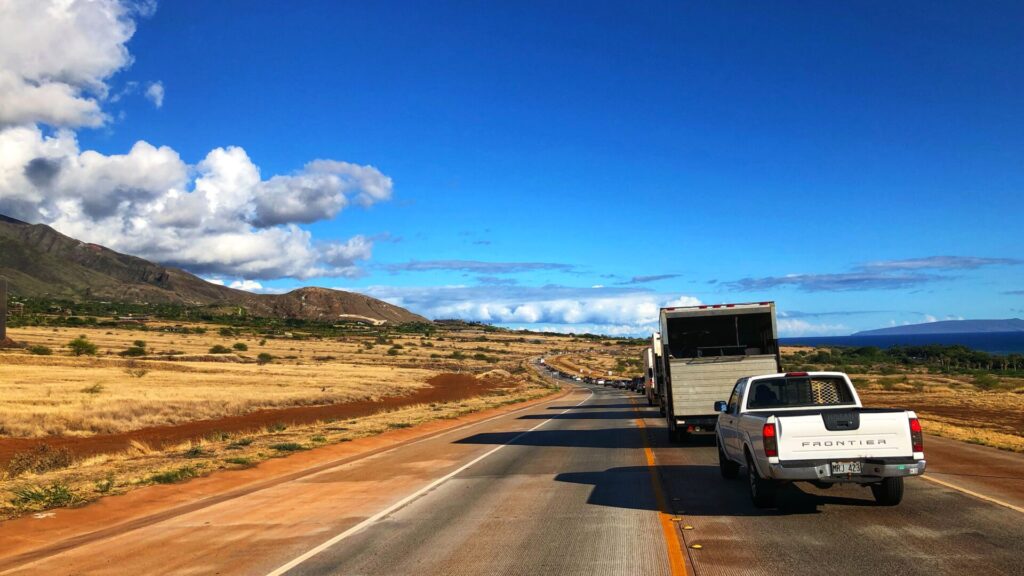 Things move slower in Hawaii, and that includes the traffic. Depending on the island you visit, it can range from inconvenient (Kona or Kihei at the end of the work day) to mind numbing (the H-1 on Oahu). While traffic on the mainland may have molded some residents into adopting aggressive driving skills, that style does not fly in Hawaii. These are islands with a finite amount of space and often only one road in and out of communities. (Kaua‘i is the leader in this category—the roads don’t even go all the way around the island.) Tailgating, passing in narrow spots and honking will not get the desired results, unless you like beef (local slang for a problem, especially one that can lead to a fight). Everyone is trying to get to their destination, and being in hurry will only lead to frustration. (Contrary to what appears to be popular belief, you won’t be vacationing any harder by driving faster.) While there are areas you’ll find people driving over the posted speed limit, we don’t have any place where you can legally go over 55 mph. And there’s plenty of island cruisers (old, beat up and rusted cars, usually hand-me-downs) that only go that fast if they’re heading downhill. Patience and friendly attitude are key ingredients to life in Hawaii. When you live on an island, you’ll inevitably run into the same people all the time, and the knuckleheads become obvious pretty quickly. So when driving around the islands, remember that there’s not rush to “get there”. You’re in Hawaii—you’re already here. Enjoy the scenery, find a local radio station playing Hawaiian music, let that person coming out of their driveway into the lane. When you’re courteous and neighborly on the road, you’ll get to experience one of greatest joys of life in Hawaii—a heartfelt shaka (a thankful hand gesture) and some aloha spirit.
Things move slower in Hawaii, and that includes the traffic. Depending on the island you visit, it can range from inconvenient (Kona or Kihei at the end of the work day) to mind numbing (the H-1 on Oahu). While traffic on the mainland may have molded some residents into adopting aggressive driving skills, that style does not fly in Hawaii. These are islands with a finite amount of space and often only one road in and out of communities. (Kaua‘i is the leader in this category—the roads don’t even go all the way around the island.) Tailgating, passing in narrow spots and honking will not get the desired results, unless you like beef (local slang for a problem, especially one that can lead to a fight). Everyone is trying to get to their destination, and being in hurry will only lead to frustration. (Contrary to what appears to be popular belief, you won’t be vacationing any harder by driving faster.) While there are areas you’ll find people driving over the posted speed limit, we don’t have any place where you can legally go over 55 mph. And there’s plenty of island cruisers (old, beat up and rusted cars, usually hand-me-downs) that only go that fast if they’re heading downhill. Patience and friendly attitude are key ingredients to life in Hawaii. When you live on an island, you’ll inevitably run into the same people all the time, and the knuckleheads become obvious pretty quickly. So when driving around the islands, remember that there’s not rush to “get there”. You’re in Hawaii—you’re already here. Enjoy the scenery, find a local radio station playing Hawaiian music, let that person coming out of their driveway into the lane. When you’re courteous and neighborly on the road, you’ll get to experience one of greatest joys of life in Hawaii—a heartfelt shaka (a thankful hand gesture) and some aloha spirit.
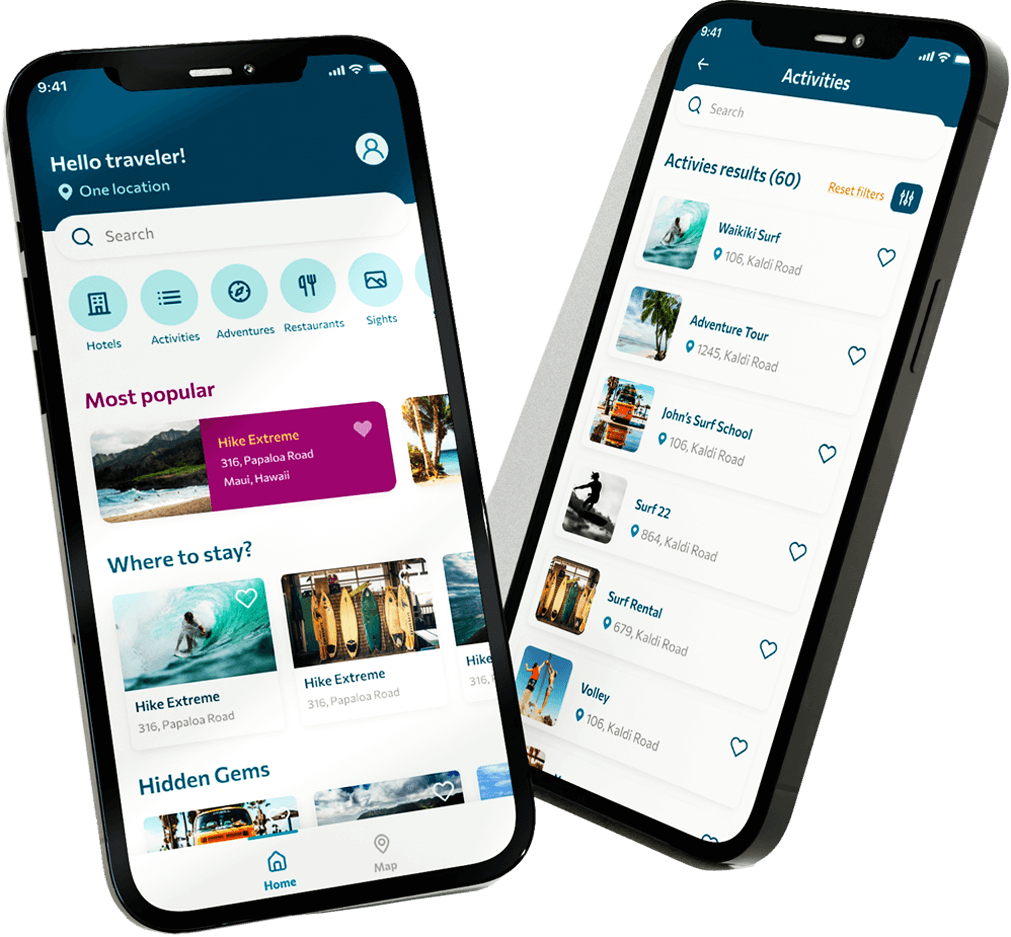
Unnecessary Equipment
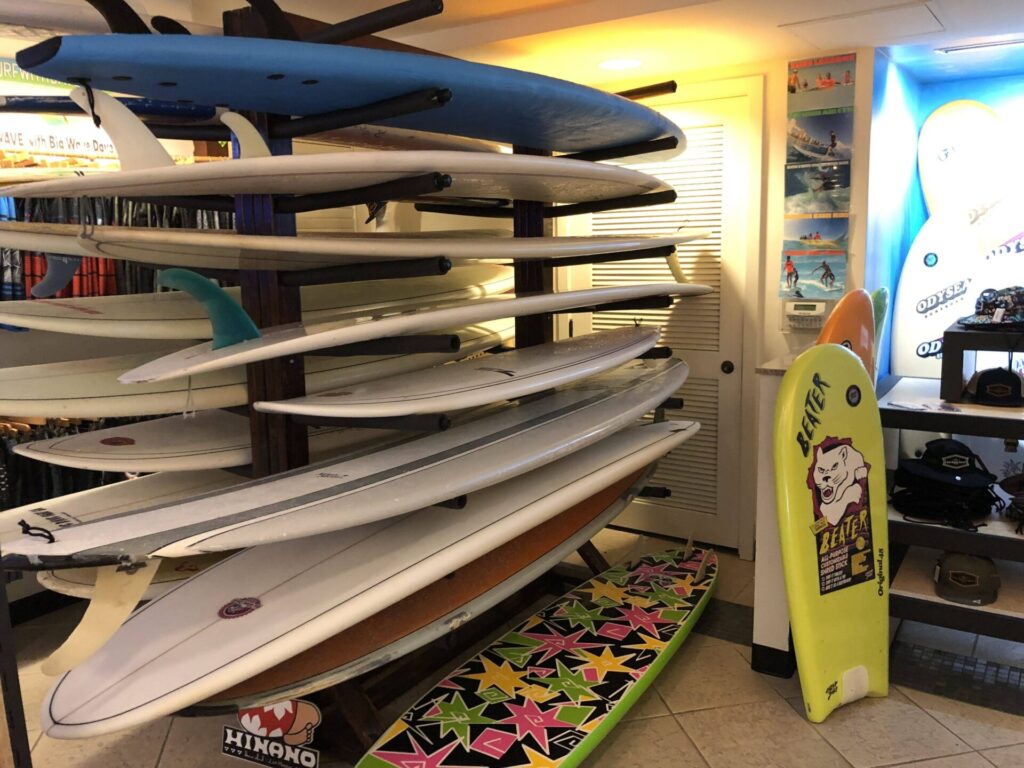 It never fails. Visitors come to Hawaii and the excitement for new activities and experiences leads to renting out every piece of equipment available. Some unlucky family member essentially becomes a pack mule for something as simple as a beach day. We’re all about having the proper gear to make the most of an experience, but there is a limit. Beach chairs and umbrellas—great things to have. Boogie boards and snorkel gear—versatile and nearly required to get the full beach experience in Hawaii. Giant, foam surf boards being hauled to every location, including the mountains—eh, not so much. Hawaii is the birthplace of surfing and it makes sense to want to give it a try while visiting. That being said, taking a lesson first or sticking to the best spots for learning to surf are your best bets. Most surf breaks around the islands are not for beginners or even novices. And there’s lots of beaches that don’t actually have any surf breaks. I’ve seen many rental vehicles that seem to use foam surfboards more as decoration than sporting equipment. I’m not saying everyone that does this is a land shark (someone who acts like they surf, but don’t), but it would be an interesting poll to find out how many people rented the boards but never even took them off the roof rack. Admittedly, many Hawaii residents always have their surfboard in/on their vehicle since good surf sessions favor the prepared. Still, consider what you’ll actually use versus what you think you need when visiting the rental shops.
It never fails. Visitors come to Hawaii and the excitement for new activities and experiences leads to renting out every piece of equipment available. Some unlucky family member essentially becomes a pack mule for something as simple as a beach day. We’re all about having the proper gear to make the most of an experience, but there is a limit. Beach chairs and umbrellas—great things to have. Boogie boards and snorkel gear—versatile and nearly required to get the full beach experience in Hawaii. Giant, foam surf boards being hauled to every location, including the mountains—eh, not so much. Hawaii is the birthplace of surfing and it makes sense to want to give it a try while visiting. That being said, taking a lesson first or sticking to the best spots for learning to surf are your best bets. Most surf breaks around the islands are not for beginners or even novices. And there’s lots of beaches that don’t actually have any surf breaks. I’ve seen many rental vehicles that seem to use foam surfboards more as decoration than sporting equipment. I’m not saying everyone that does this is a land shark (someone who acts like they surf, but don’t), but it would be an interesting poll to find out how many people rented the boards but never even took them off the roof rack. Admittedly, many Hawaii residents always have their surfboard in/on their vehicle since good surf sessions favor the prepared. Still, consider what you’ll actually use versus what you think you need when visiting the rental shops.
Surfing
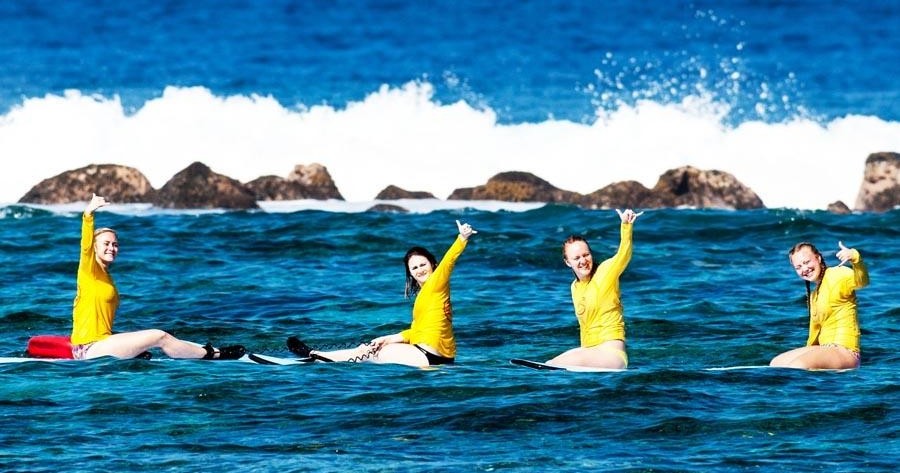
Kahaluu Bay Surf and Sea: Group Surf Lesson
While we’re on the topic of surf things, a personal annoyance I have to get off my chest concerns attire. (I know, in the opening paragraph I said touristy attire isn’t something to worry about, but hear me out.) Rash guards should only be used when you’re at the beach and/or in the water. These Lycra shirts that prevent sunburn and (as the name suggests) chaffing from surf and boogie boards are a great tool. You can avoid using sunscreen that can have questionably health effects for you and the environment, they help keep the wind off you and they dry fairly quickly. These are great attributes. However, rash guards aren’t meant to be worn as your shirt throughout the day. For one thing, rash guards aren’t very breathable and you’ll end up getting pretty hot and sweaty wearing one around town. Also, rash guards are usually way tighter than normal clothes and not in a flattering way. Stick to cotton or another material that will wick the sweat away and not just cling to you like a wet towel.
Outdoor Etiquette
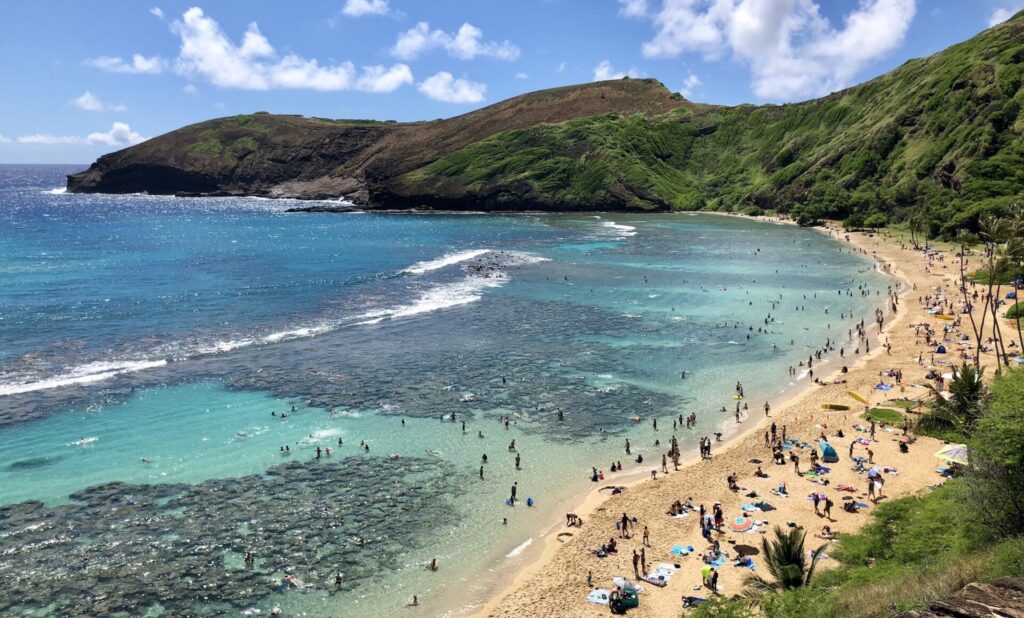 Not everyone has the luxury of access to the great outdoors. It’s something that many that live in and around natural areas take for granted. Tourists and newcomers are often easy to spot, but it’s the faux pas of behavior that leaves a lasting impression. Knowing how to conduct oneself when out enjoying the beach, hiking trails and other natural areas isn’t always common knowledge, but it usually is common sense. We’ll start with everyone’s go-to natural area—the beach.
Not everyone has the luxury of access to the great outdoors. It’s something that many that live in and around natural areas take for granted. Tourists and newcomers are often easy to spot, but it’s the faux pas of behavior that leaves a lasting impression. Knowing how to conduct oneself when out enjoying the beach, hiking trails and other natural areas isn’t always common knowledge, but it usually is common sense. We’ll start with everyone’s go-to natural area—the beach.
The Hawaiian Islands are blessed with some of the nicest beaches in the world. It makes sense that people make a beeline for the places where the sand meets the sea. Just be aware of your surroundings when you do so. Some beaches close to resorts and places to stay are inherently crowded and so finding a good spot set up for the day can be challenging. Try not to claim a spot directly next to or (especially) in front of another person or group’s base. Hawaii is full of friendly people, but personal space is still appreciated. Inadvertently blocking your neighbors view or making them feel crowded is a sure fire way to get some stink eye. Another thing to keep in mind is how you’re applying sunscreen. Spray sunscreens are popular for their ease of use, but they’re frowned upon here in Hawaii. For one thing, many spray sunscreens use ingredients that are banned here in order to protect the reefs. Also, I can’t tell you how many times I’ve seen visitors spray on sunscreen and immediately jump in the ocean. Even if that sunscreen is “reef-safe”, it needs time to absorb onto your skin to be effective. If you don’t give the sunscreen time to soak in, it’s just going to wash off in the water leaving an oil slick behind you and giving you a burn. Your best bet is to cover up rather than rely on sunscreen, or at least give the sunscreen time to do its thing. This goes for reapplying, too. It will give you time to watch the ocean conditions so you’ll be better prepared for any surf or currents.
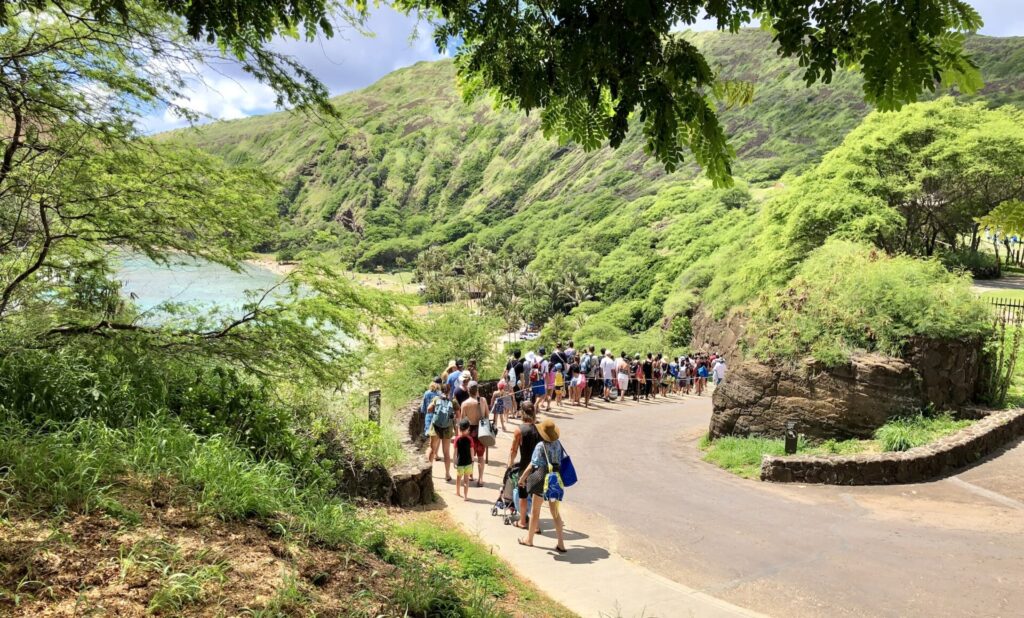 Hiking trails are another place where the uninitiated can ruin their and other’s experience. The hiking trails in Hawaii are incredible and droves of people look to enjoy the mix of coastal and tropical spots and lookouts. Similar to the beaches, there are times you can find yourself nearly shoulder-to-shoulder trying to navigate these trails. I’ve noticed many people treating these hikes like a trek through their home city—in a hurry, no eye contact and seemingly oblivious to those around them. Enjoying your time in nature safely means slowing down and (again) being aware of your surroundings. Many of the hiking trails here are on narrow paths with steep hillsides and cliffs around them. Recognizing when you’re coming up to spot where the trail narrows, crosses a stream or has some other obstacle, and then acknowledging any other hikers around you is paramount. Identifying when you have space to step off the trail and can let others pass is one of the easiest ways keep things going smoothly. Be aware of groups that might take more time negotiating those obstacles—those with kids, elderly folks and other with mobility issues. Just like on the road, being courteous and staying cognizant goes a long way in staying safe and enjoying yourself. And unless you’re trying to outrun a storm (which is a whole other safety concern and a topic for another blog), there’s usually no need to be in a rush. Hawaii is one of the premier places to literally stop and smell the flowers.
Hiking trails are another place where the uninitiated can ruin their and other’s experience. The hiking trails in Hawaii are incredible and droves of people look to enjoy the mix of coastal and tropical spots and lookouts. Similar to the beaches, there are times you can find yourself nearly shoulder-to-shoulder trying to navigate these trails. I’ve noticed many people treating these hikes like a trek through their home city—in a hurry, no eye contact and seemingly oblivious to those around them. Enjoying your time in nature safely means slowing down and (again) being aware of your surroundings. Many of the hiking trails here are on narrow paths with steep hillsides and cliffs around them. Recognizing when you’re coming up to spot where the trail narrows, crosses a stream or has some other obstacle, and then acknowledging any other hikers around you is paramount. Identifying when you have space to step off the trail and can let others pass is one of the easiest ways keep things going smoothly. Be aware of groups that might take more time negotiating those obstacles—those with kids, elderly folks and other with mobility issues. Just like on the road, being courteous and staying cognizant goes a long way in staying safe and enjoying yourself. And unless you’re trying to outrun a storm (which is a whole other safety concern and a topic for another blog), there’s usually no need to be in a rush. Hawaii is one of the premier places to literally stop and smell the flowers.
E Komo Mai (Welcome)
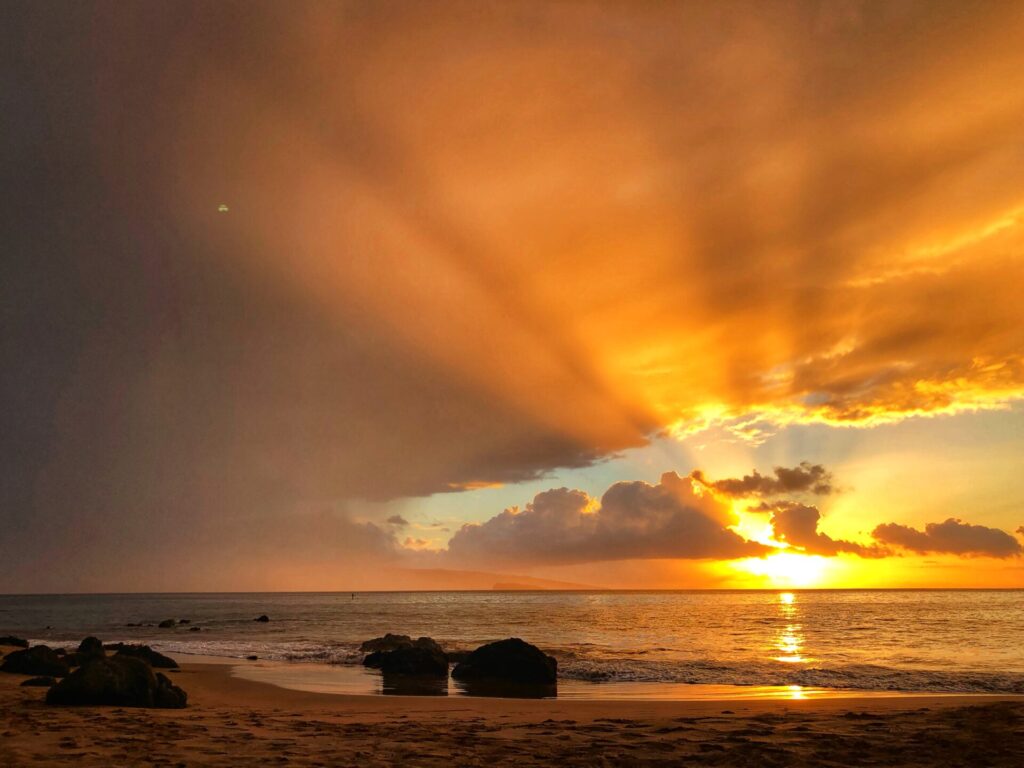 While this is by no means a comprehensive list of things that will keep you from being a kook in Hawaii, it’s a start. Common sense and treating the places you visit like you’re a guest in someone’s home are really your best tools for feeling welcomed. When we visit new places, there’s usually no hiding the fact that you’re a newbie. Don’t let that hinder your fun or the experience of those around you. Keep a good attitude, a smile and throw a shaka in gratitude to the locals, residents and fellow travelers. It’s your best bet for feeling ho‘okipa (hospitality) from those around you.
While this is by no means a comprehensive list of things that will keep you from being a kook in Hawaii, it’s a start. Common sense and treating the places you visit like you’re a guest in someone’s home are really your best tools for feeling welcomed. When we visit new places, there’s usually no hiding the fact that you’re a newbie. Don’t let that hinder your fun or the experience of those around you. Keep a good attitude, a smile and throw a shaka in gratitude to the locals, residents and fellow travelers. It’s your best bet for feeling ho‘okipa (hospitality) from those around you.



0 Comments